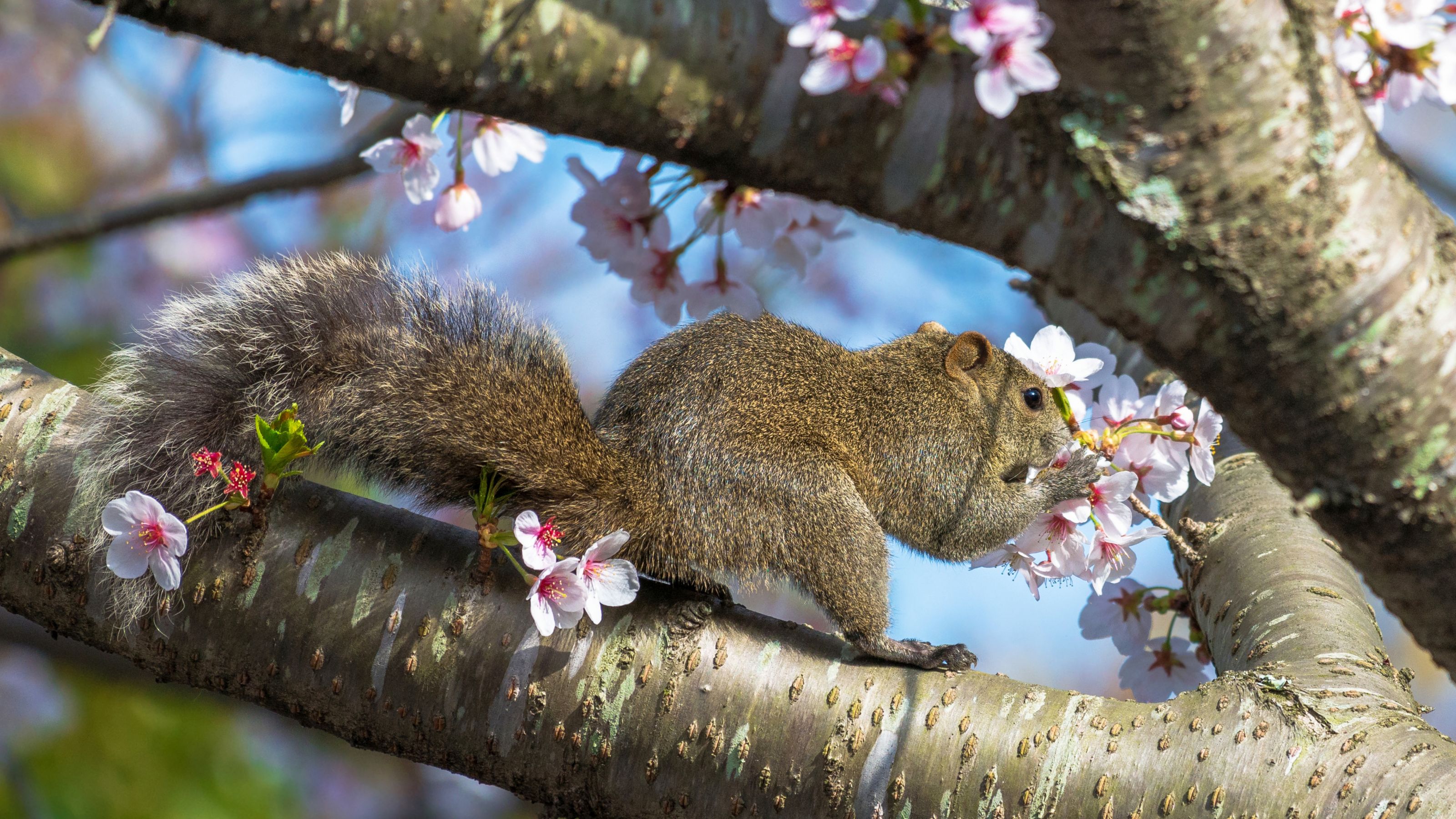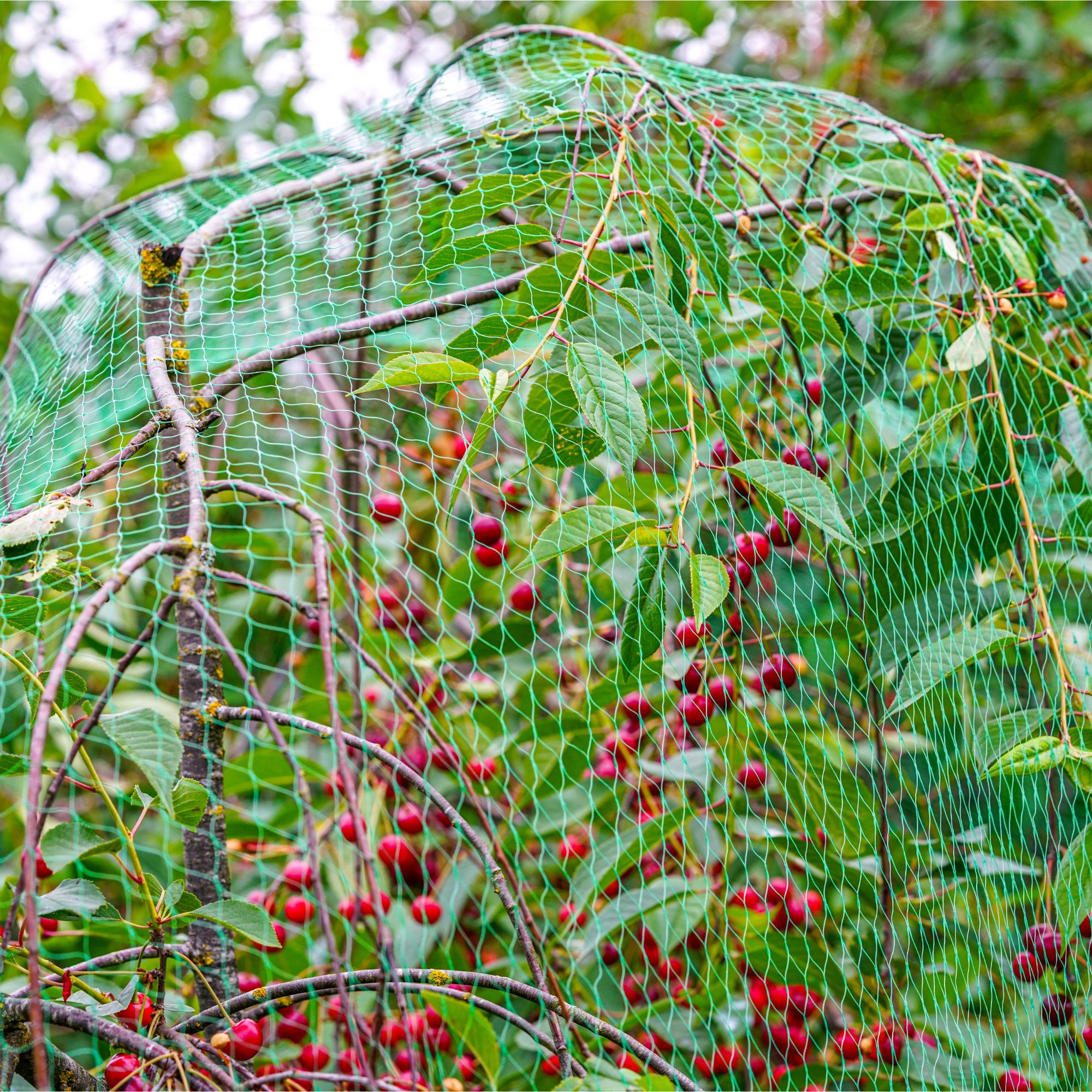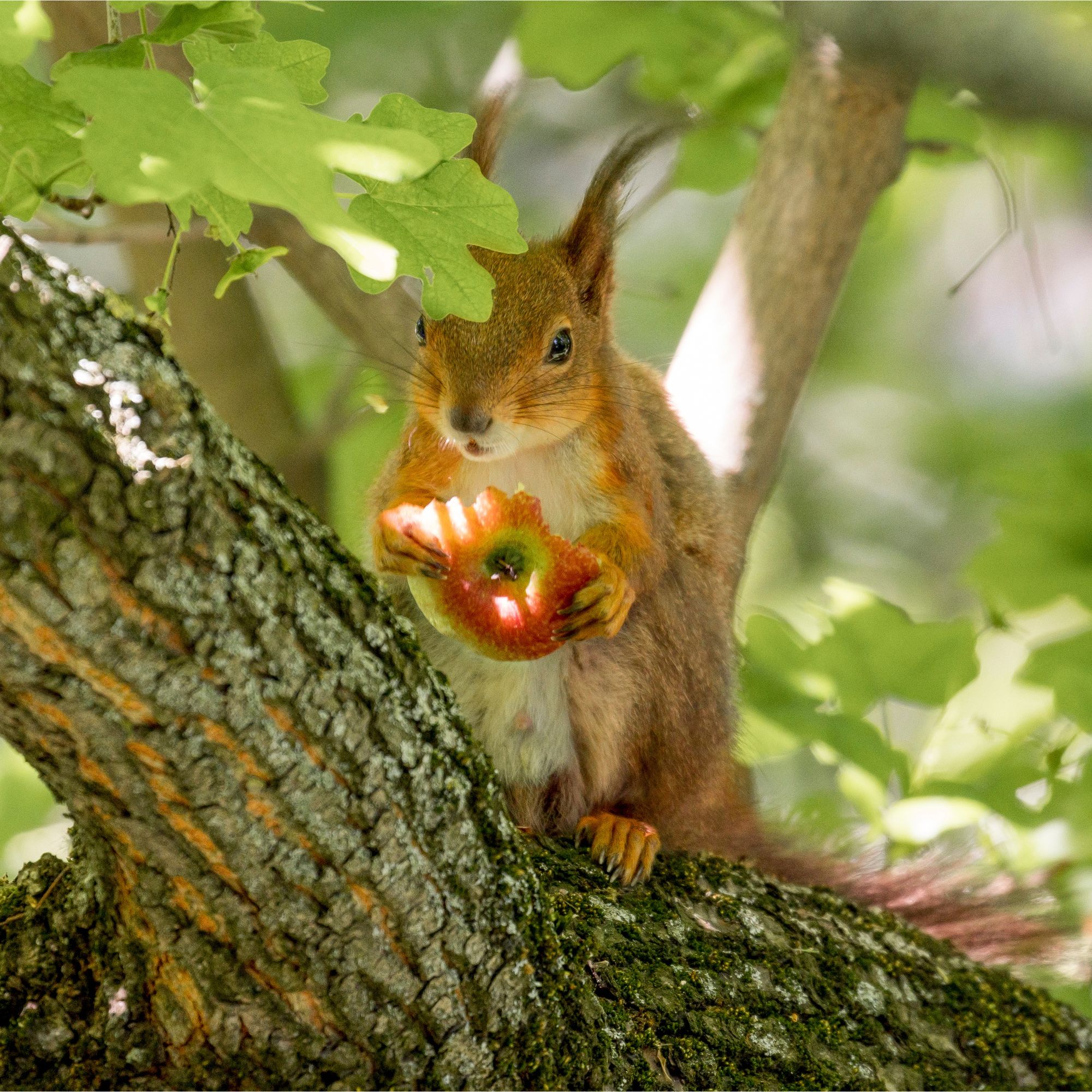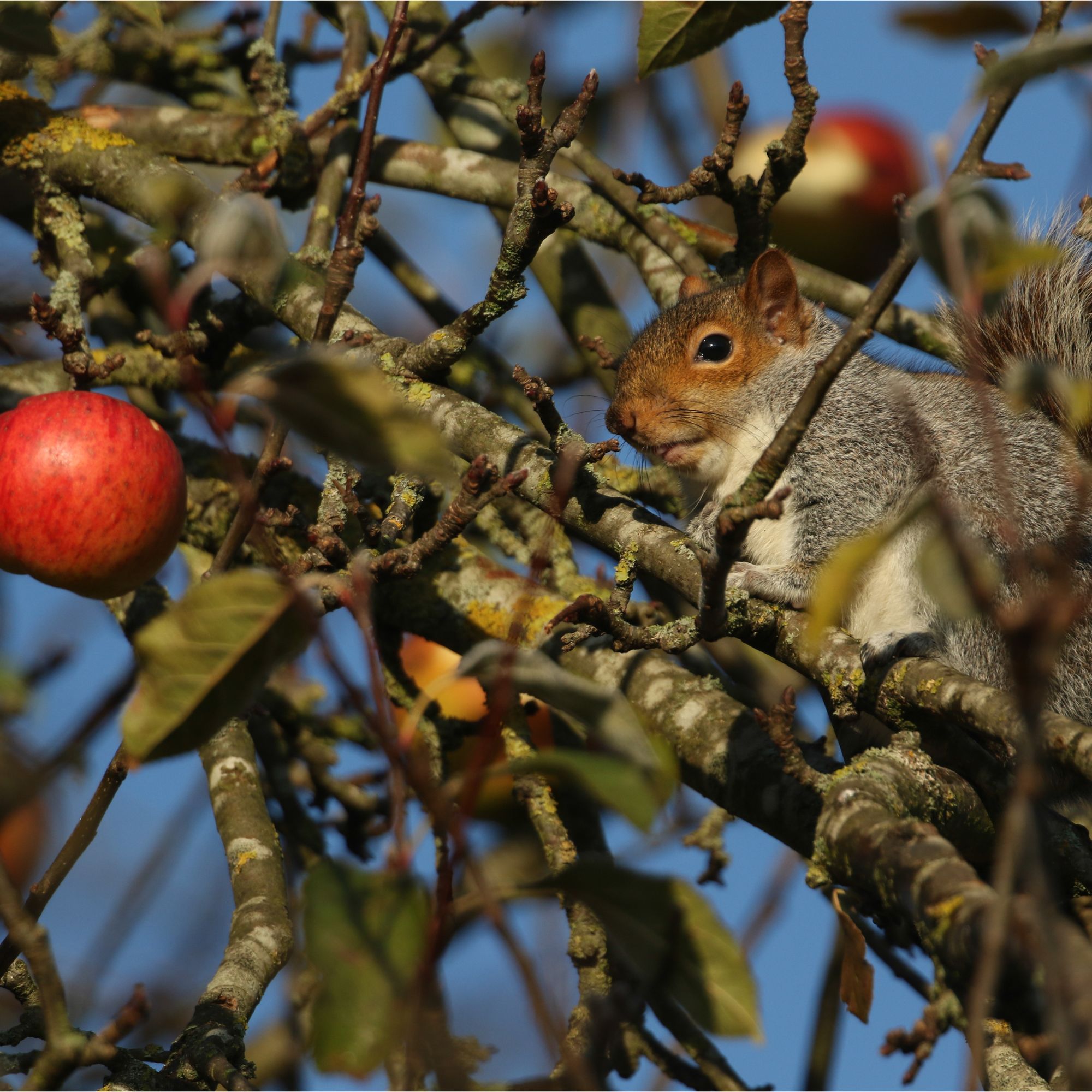4 ways to keep squirrels away from fruit trees and protect your future harvests
Get there before they do!


We’re racing towards summer, and soon, those blossoms on our fruit trees will start turning into delicious fruits for summer and autumn harvests. Sadly, that might mean learning how to keep squirrels away from fruit trees, too.
Even the easiest fruit trees to grow are vulnerable to hungry wildlife, and squirrels are on the case throughout the year.
‘Fruit trees are especially at risk, as squirrels can often chew on buds, bark, and the actual fruit itself,’ explains Mark Dwelly, head gardener at Audley Villages.
Luckily, there are humane methods to stop squirrels from eating your plants. To find out how to keep squirrels away from fruit trees, I spoke to Mark and a few other garden experts.

Mark Dwelly got into gardening after paying attention to green spaces when playing golf. He went to horticultural college and his career stemmed from there. After looking after the grounds of a private school, he then started at Audley Stanbridge Earls, looking after 32 mixed acres of woodlands, lakes and vast gardens. He since has been promoted to Head Gardener for the group.
1. Use netting mindfully

One of the most obvious ways to protect your fruit tree from squirrels and other wildlife is to cover them with netting. You’ll need to use it carefully, though – make sure it’s pulled taut and securely fitting against the tree so that it doesn’t accidentally trap or injure wildlife.
‘You can cover your fruit trees or individual fruits with animal netting, or you can even find specific fruit cages for smaller planting,’ explains Mark. You can buy fruit tree netting bags from Amazon or stock up on protective mesh netting from B&Q.
‘An extra safety measure you can take is using strong, fine mesh netting and securing it tightly to prevent any gaps. Regular checks for holes will also help maintain its effectiveness and safety.’
Sign up to our newsletter for style inspiration, real homes, project and garden advice and shopping know-how
Used properly, netting can be a really effective measure against a range of garden plant pests. It’s one of the things I wish I knew about before starting a raised vegetable bed!
2. Try natural deterrents

One of the more common methods for stopping squirrels from digging up bulbs is planting certain pest-repellent plants, and the same applies to fruit trees.
I’m a huge fan of companion planting ideas, and they can be really effective if you know what to look out for.
‘Certain plants like mint and daffodils are known to keep squirrels away because of their strong scents,’ says Mark. ‘Planting these around your fruit trees will help keep squirrels at bay.’
Where to find plants that squirrels hate:
- Sarah Raven: Stock up on spearmint plants to help deter squirrels.
- Thompson & Morgan: Squirrels hate the scent of fritillaries like Fritillaria meleagris, too.
3. Use a baffle

You might have heard of baffles if you've ever looked for ways to keep rats and squirrels away from your birdfeeder, but according to LBS Horticulture's gardening expert, Graham Smith MCIHort, you can use them on fruit trees, too.
'Generally, the baffle is a plastic or metal sleeve that wraps around the tree trunk to prevent squirrels from being able to climb up it, as it makes the surface too smooth for them to grip onto,' Graham explains.
This method won't work as well if your fruit tree is close to another tree, fence, or any other structure squirrels can jump from. For standalone trees, though, it can be a brilliant solution – and you can even make your own.
'You can make your own DIY tree baffle using an old plastic bucket,' say the experts at Kennel Store. 'Cut off the bottom, slice down one side, and fit it snugly around the tree trunk.
'For added security, especially on tall trees, drill a hole on each side of the bucket and use garden string or twine to suspend the baffle from a lower branch. This helps keep it in place even on windy days, and adds a little rustic charm to your tree protection strategy.'
4. Keep your trees tidy

Besides direct pest protection measures, learning how to prune your fruit trees will bag you better harvests and keep squirrels at bay.
‘Squirrels love to jump and – unsurprisingly – they are very good jumpers,’ says Mark from Audley Villages. ‘It's ideal to trim any branches that overhang or come close to your other trees, your neighbours’ trees, or any fences. This will help reduce their access points and make it harder for them to jump onto your fruit trees.’
Get your hands on a sturdy pair of secateurs like the Spear & Jackson Razorsharp Geared Anvil Secateurs from Amazon, and figure out how to prune apple trees or the type of fruit tree you have, and you’ll reap the benefits every year.
Luckily, there are plenty of ways to keep squirrels away from your fruit tree, but it all depends on how close it is to other trees and garden structures. Still, a few pest-repellent plants and protection measures can go a long way!

Sophie joined the Ideal Home team as Gardens Editor in June 2024. After studying English at Royal Holloway, University of London, she began writing for Grow Your Own, which spurred on her love of gardening. She's tried growing almost every vegetable under the sun, and has a soft spot for roses and dinnerplate dahlias.
As Gardens Editor, Sophie's always on the lookout for the latest garden trend. She loves sharing growing hacks for every space, from herbaceous borders to balconies.
You must confirm your public display name before commenting
Please logout and then login again, you will then be prompted to enter your display name.